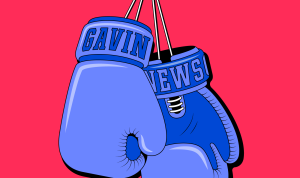Last week, as much of the world focussed onIran and Israel, the crypto lobby was celebrating a huge victory in Washington. “History is being made,” Jeremy Allaire, the founder and chief executive of Circle, a stablecoin platform,wroteon X, shortly after the Senate voted through theGENIUSAct, a bill designed to facilitate the growth of the digital currency, and to give it, and other crypto assets, the stamp of legitimacy.
Stablecoins, which are designed to retain a constant value of one dollar, making them much less volatile than regular cryptocurrencies such as Bitcoin and Ethereum, currently exist in a regulatory gray area, in which regulators have treated some, but not all, of them as securities subject to the securities laws. Although companies such as Tether and Circle created stablecoins that now have a combined market cap of more than two hundred and fifty billion dollars worldwide, major banks and other traditional financial institutions largely stayed away from them, put off by regulatory uncertainty and crypto’s association with illicit transactions. TheGENIUSAct (which stands for Guiding and Establishing National Innovation for U.S. Stablecoins Act) may well change all this and bring crypto into the mainstream financial system. It treats stablecoins as a means of payment rather than as securities, and it creates a set of rules for their issuer to follow, under the oversight of state and federal regulators.
During the Biden Administration, a number of crypto exchanges failed, and the creator of one of them,Sam Bankman-Fried, was convicted of eight counts of fraud and conspiracy. (He had illegally transferred customers’ deposits to his hedge fund.) Over at the Securities and Exchange Commission, Gary Gensler, the Biden-appointed chair, said at the time that the crypto industry was “rife with fraud and manipulation,” and his agency sued some of its most prominent firms, including Coinbase, the United States’ top crypto exchange, claiming that they were violating securities laws. Last year, a survey from the Pew Research Center found that more than sixty per cent of Americans had little or no faith in the safety of crypto as an investment.
But, also in 2024, three superPACs financed by the crypto industry spent an estimated two hundred and sixty-five million dollars to elect pro-crypto candidates and defeat crypto skeptics, such as Sherrod Brown, the senior Democratic senator from Ohio. With last week’s vote, the crypto lobby “recouped some of its huge investment,” Bartlett Naylor, a financial-policy analyst at the consumer-advocacy group Public Citizen, told me. “The crypto sector’s financial contributions converted some elected politicians to a pro-crypto stance, and it scared the bejeezus out of a lot of others,” he added.
Defenders of theGENIUSAct say that it will protect holders of stablecoins by requiring their issuers to adhere to a set of codified rules, which include keeping the holders’ money in safe reserve assets, such as Treasury bills and bank accounts; publishing the composition of these reserves on a monthly basis; and, in the case of issuers with a market capitalization of more than fifty billion dollars, publishing audited financial statements annually. The bill also stipulates that stablecoin issuers must observe some money-laundering laws, and that, if they enter bankruptcy, the holders of their stablecoins will have first claim on their assets. “The Genius bill will ensure stablecoin reserves will be safe and boring, and that consumers will have a direct legal claim on the underlying assets,” Christian Catalini, a research scientist at M.I.T.’s Sloan School of Management, who set up the university’s Cryptoeconomics Lab, wrote to me in an e-mail.
Critics of the bill say that its protections don’t go nearly far enough. “It’s a collection of half measures that will create a regulatory imprimatur for stablecoins without removing the dangers associated with them,” Hays said. “We see in this bill a failure to learn from the regulatory mistakes of the past.” He compared it to the Commodity Futures Modernization Act of 2000, which ostensibly set up a new regulatory framework for derivatives but actually weakened oversight in key areas—a failure that became patent during the global financial crisis of 2007-09. “We’ve seen this show before,” Hays added.
The Senate legislation contains a conflict-of-interest provision that would “prohibit any member of Congress or senior executive branch official from issuing a payment stablecoin product during their time in public service.” However, legal experts say this restriction, like other ethics laws, wouldn’t apply to the President or Vice-President, an exemption that is far from trivial. In March, World Liberty Financial, a crypto startup that is majority-owned by the Trump family, announced that it was issuing a new stablecoin, USD1. Since the Trump family is now a player in stablecoins, it potentially stands to benefit greatly from an expansion in their use. (The market cap of USD1 already stands at about $2.2 billion.) “If this bill passes the full Congress, it is certainly possible that Trump’s stablecoin could become one of the dominant parts of the crypto ecosystem, which would be extremely rewarding to him,” Hays said.
The Trump family’s efforts to enrich itself by issuing a “$Trump” meme coin have alreadyreceiveda great deal of attention. (Earlier this month, theForbesreporter Dan Alexanderestimatedthat Trump’s meme-coin haul could be worth more than three hundred million dollars.) Critics say that the existence of a Trump-owned stablecoin creates new possibilities for interested parties to funnel money to him and his companies. Early last month, one of World Liberty Financial’s co-founders said that its new stablecoin would be used in a two-billion-dollar investment that an entity tied to the government of the United Arab Emirates was making in Binance, the world’s top crypto exchange. The company’s founder, the Chinese billionaire Changpeng Zhao, was sentenced in the U.S. to four months in prison last April, after pleading guilty to money-laundering violations, and he is now reportedly seeking a Presidential pardon. At the end of May this year, the S.E.C. announced that it was dismissing a civil suit against Binance.
Two progressive Democratic senators who opposed theGENIUSAct—Jeff Merkley, of Oregon, and Elizabeth Warren, of Massachusetts—are demanding an inquiry into the U.A.E.-Binance transaction, which they claim could violate federal bribery laws. Merkley and Warren also demanded, and failed to secure, stronger anti-corruption provisions in theGENIUSAct, which, Merkley said, “stamps a congressional seal of approval on President Trump selling access to the government for personal profit.”
The legislation’s sponsors deny this, of course. Its supporters also claim that bringing stablecoins into areas of finance outside crypto would generate broad economic benefits. Catalini, who previously worked with Facebook on its abandoned effort to create a cryptocurrency, told me that one of the most notable benefits would be “faster, lower-cost, global payments.”
Catalini was referring to online payments for everything from Etsy purchases to airline tickets and international money transfers. Traditionally, the payments infrastructure in the United States has been dominated by Visa and Mastercard, which operate their own networks and charge businesses hefty commissions for transferring their customers’ money. In recent decades, new payments services have appeared, such as PayPal and Klarna, but Catalini said that they deliberately limit interoperability, to keep up their profit margins: you can’t send money from a PayPal digital wallet to a Cash App wallet. In a world where online payments were carried out using stablecoins, which are represented on a blockchain—an anonymous and distributed digital ledger that lies at the foundation of crypto transactions—this would change, Catalini insisted. “Wallets, fintechs, and services will be interoperable by default.”
According to recent news reports, some big non-crypto firms, including Amazon, Walmart, and Meta, are considering launching their own stablecoins, while banks such as Wells Fargo and Bank of America are discussing teaming up to create one. All this activity suggests that more is at stake here than trading in crypto assets. “We will see massive entry, both by incumbents and challengers,” Catalini predicted. Critics of crypto say that this isn’t necessarily a good thing. “Essentially, stablecoin, this private form of money, is going to be part of the mainstream financial system,” Corey Frayer, the director of investor protection at the Consumer Federation of America, told me. “People will be using Bezos bucks, Zuckerberg bucks, Trump bucks for payments. It’s going to be incredibly confusing. And there will be no guarantee that these new forms of dollars will always be worth a dollar.”
During the Biden Administration, Frayer served as an adviser on crypto issues to Gensler at the S.E.C. Several times in recent years, he reminded me, stablecoins have traded well below a dollar—in May, 2022, when the stablecoin Tether fell to ninety-five cents; and again, in March, 2023, during the Silicon Valley Bankcrisis, when the value of Circle’s USDC coin fell below eighty-seven cents. Back then, there were relatively few linkages between crypto and most of the banking system, which limited the fallout from ructions in the crypto world. But, if stablecoins expand greatly and hold much of their cash in bank accounts, or if banks create their own stablecoins, a run on stablecoins—in which their holders try to turn them into actual cash—could conceivably generate a run on the banks. “The stablecoin bill creates a transmission channel from the extremely volatile crypto ecosystem to the traditional financial sector, and that’s incredibly dangerous,” Frayer said.
Ultimately, Frayer went on, the proliferation of stablecoins could turn the U.S. financial system into a twenty-first century version of the pre-Civil War system, in which many private banks issued their own currencies, and businesses and savers had to decide whether to trust them. In this era of “wildcat banking,” the value of money fluctuated widely, and there were frequent runs and bank failures. To address this chaos, and to help fund the war against the Confederacy, Lincoln’s government eventually passed the National Banking Acts of 1863 and 1864, which imposed stricter capital and reserve requirements on banks and helped to create a single national currency.
A version of Frayer’s argument has also been made by Barry Eichengreen, a leading economic historian who teaches at Berkeley. “The problems that bedeviled 19th-century dollars are likely to be equally debilitating to the stablecoin ecosystem,” Eichengreen wrote in aguest essayfor theTimeslast week. Pointing to this historical experience, Frayer said, “It is an ironic situation that we should be on the verge of returning to a system of private monies after everything we have learned.” If the political embrace of crypto continues unchecked—House Republicans are considering broadening theGENIUSAct to deregulate other areas of the industry—“irony” could end up being too weak a word. ♦









